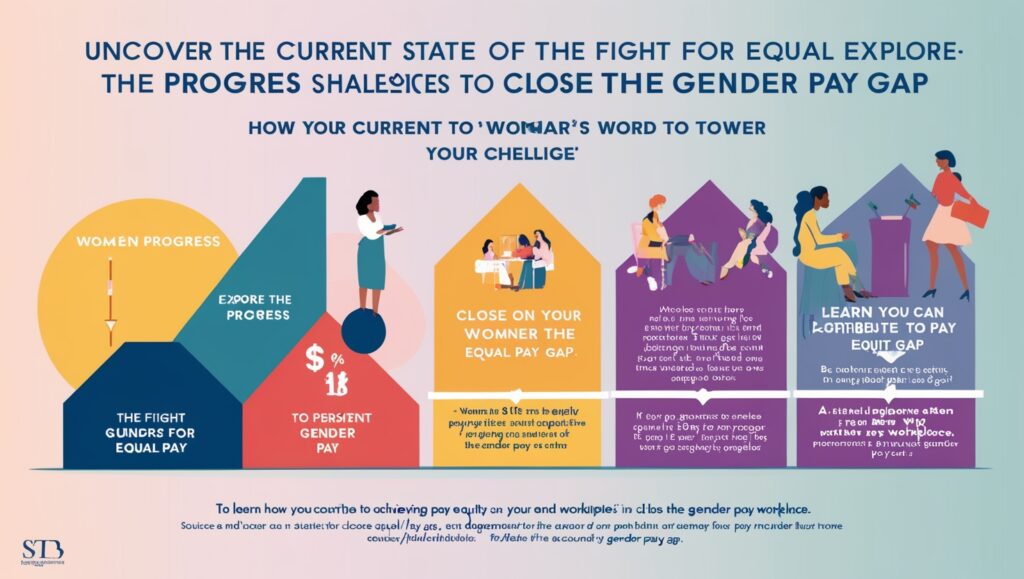The Fight for Equal Pay Where Do We Stand
Equal pay has been a pressing issue for decades, representing a cornerstone in the broader struggle for gender equality and workplace fairness. Despite notable progress, disparities persist in various industries, job roles, and demographics. This blog explores the historical context, current challenges, and ongoing efforts in the fight for equal pay, shedding light on where we stand today.
Historical Context of Equal Pay
The fight for equal pay gained momentum during the 20th century. In 1963, the United States passed the Equal Pay Act, making it illegal to pay women less than men for the same work. Similar laws have been enacted globally, with many countries integrating equal pay clauses into their labor laws. However, enforcement and cultural norms have often lagged behind legislation, leaving pay gaps stubbornly in place.
Understanding the Current Pay Gap
The global gender pay gap remains a significant issue, with women earning, on average, 77 cents for every dollar earned by men, according to the United Nations. The disparity is even more pronounced for women of color, women with disabilities, and those in marginalized communities. The Fight for Equal Pay Where Do We Stand Key factors contributing to the gap include:
- Occupational Segregation: Women are often underrepresented in high-paying fields like technology and finance and overrepresented in lower-paying sectors such as education and caregiving.
- Motherhood Penalty: Women frequently face career interruptions or reduced opportunities after becoming mothers, affecting their long-term earning potential.
- Discrimination: Despite laws, biases—both conscious and unconscious—continue to affect hiring, promotions, and salary negotiations.
Progress and Key Milestones
Efforts to close the pay gap have gained traction in recent years. Movements like #EqualPayDay and #MeToo have brought widespread awareness to workplace inequalities. Many companies are conducting pay audits, increasing transparency, and committing to equitable pay practices. Countries like Iceland have gone further, requiring companies to prove they pay employees equally.
Additionally, women’s increased participation in education and the workforce has helped narrow the gap in certain sectors. Younger generations are entering the workforce with more confidence and tools to advocate for fair pay.
Challenges That Remain
Despite these advances, the road to achieving true pay equity is far from over. Challenges include:
- Lack of Transparency: Many companies avoid disclosing salary information, making it harder to identify and address disparities.
- Systemic Bias: Deeply ingrained stereotypes continue to affect perceptions of women’s work.
- Intersectionality: Women of different races, ethnicities, and socioeconomic backgrounds face unique challenges that compound pay inequality.
What Can Be Done?
Achieving equal pay requires collective action from governments, businesses, and individuals:
- Legislation and Enforcement: Governments must strengthen equal pay laws and ensure they are enforced effectively.
- Pay Transparency: Companies should disclose salary ranges and conduct regular audits to identify and correct disparities.
- Workplace Flexibility: Policies like parental leave and remote work can help mitigate the motherhood penalty.
- Advocacy and Education: Women should be encouraged to negotiate salaries and seek leadership roles, while men can be allies by supporting equitable practices.
The Role of Individuals
Individuals play a crucial role in advocating for equal pay. Whether it’s negotiating salaries, supporting advocacy groups, or calling out discriminatory practices, every voice matters in this fight. Employers and employees alike must foster a culture of fairness and respect.
Final Thoughts
The fight for equal pay is a testament to the broader quest for justice and equality. While significant progress has been made, much work remains to be done to bridge the gap. By addressing systemic biases, promoting transparency, and ensuring accountability, we can pave the way for a future where everyone is compensated fairly for their contributions—regardless of gender or background.
The journey to equal pay is ongoing, but with sustained effort and collective will, it’s a goal within reach.

